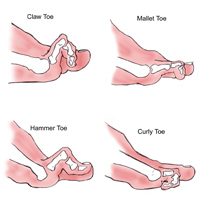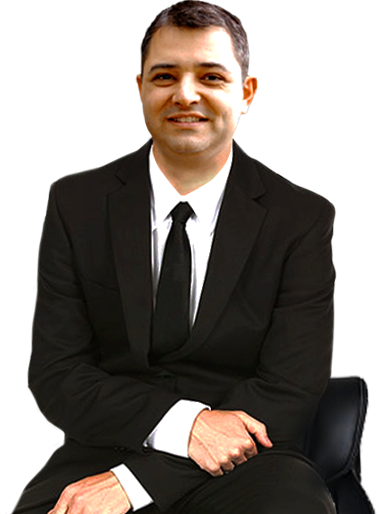Hammer Toe Surgery Information
The terms claw and hammer toe are often used interchangeably. Although they are different conditions, the end deformity/appearance of the toe in both is similar with a prominent ‘knuckle’ which rubs on footwear and results in pain or a wound. Sometimes the tip of the toe is painful. The cause is thought to be an imbalance of the muscles/tendons that move the toes. The mainstay of treatment is appropriate footwear (wide, deep toe box) and protective splints (usually soft silicone). If these fail to control the symptoms, you may need surgery.
The Surgery

Straightening painful toes involves stiffening the involved toe joint in a straighter position. Under general and/or local anaesthesia an incision is made over the prominent knuckle and the joint is excised/removed with a small saw. The toe is straightened and the position is held with a smooth wire which exits at the tip of the toe, or a small metallic implant. Further tendon balancing procedures are performed as required, including extensor tendon lengthening, or stabilisation of the metatarsophalangeal joint (at the base of the toe) through a separate incision. The wound is closed with sutures. If a wire is used, it needs to be removed at 4-6 weeks after surgery at the clinic.
Post-Operatively
Usually this is a day-case procedure. You can walk on the foot with a surgical shoe as soon as you are awake. Crutches are optional. You will need to keep the foot elevated as often as possible, this is to control swelling and pain and prevent bleeding. Some bleeding through the dressing is normal. You may need to take medication to control pain. You should keep the bandages dry until your first post-operative clinic visit, where the sutures are removed and the toe is re-dressed and taped.
- Activity
- Timeframe (approximate)
- Walk with surgical shoe/sandal
- 6 wks
- Walking in wide shoes
- 6 wks– 3 mts
- Most activities and shoes
- 3 – 6 mts
- Full Recovery
- Up to 12 mts
- Type of Work
- Time off
- Sitting
- 2 weeks
- Standing
- 4 weeks
- Driving (if right foot)
- 4-6 weeks
- Lifting
- 6-8 weeks
Risks of surgery
All surgical procedures carry some risk. The risk of complications with toe straightening is low. Most patients benefit from surgery to correct a symptomatic hammer-toe or claw-toe, however a small number of patients can be made worse. You should weigh up the benefits with the risks prior to electing to have surgery.
This is a list of the most common problems which can occur:
- Swelling – is normal and improves with time, but can occasionally persist past 6 months
- Wound healing problems – increased if smoking, diabetes, poor circulation
- Nerve injury – resulting in numbness or pins and needles, occasionally pain
- Bleeding – usually just visible through the dressing, may require an early dressing change
- Infection – minimised with antibiotics, elevation, keeping the dressing clean and dry
- Pain – which may require strong medication (usually Paracetamol is adequate)
These are rarer problems, but they can and do happen:
- Recurrence or Under/Overcorrection – ‘too straight’, ‘too short’ or even deviate again in another direction
- Problems with fixation – loss of fixation, fracture, symptomatic hardware, non-union, may require re-operation
- Failure to relieve pain or transfer of pain to other part of foot
- Complex regional pain syndrome (CRPS) – nerve pain syndrome, risk reduced with Vitamin C 500mg daily for 40 days
- DVT – clot in the deep veins of the leg (increased if smoking, contraceptive pill, hormone replacement or previous history)
- Anaesthetic complications – more likely if there are pre-existing medical disorders
You will need the Adobe Reader to view and print these documents.
![]()









